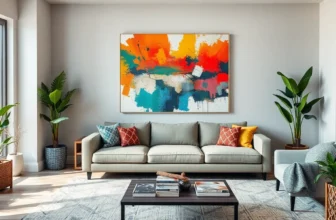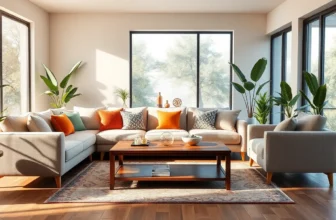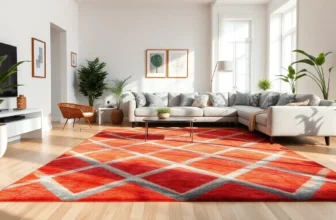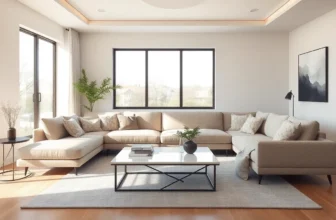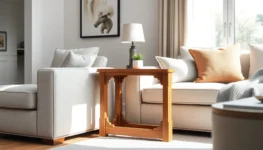
Stylish End Tables for Living Room: Enhance Functionality and Aesthetic Appeal
End tables are more than just functional pieces of furniture; they add style and personality to a living room. Whether it’s a cozy nook for a cup of coffee or a stylish display for decorative items, these tables play a crucial role in enhancing the overall aesthetic. With a myriad of designs, materials, and sizes available, choosing the right end table can transform a space from ordinary to extraordinary.
In today’s fast-paced world, maximizing both utility and style in home decor is essential. End tables provide the perfect solution by offering convenient storage while complementing the existing decor. From modern minimalist designs to rustic charm, there’s an end table to suit every taste and lifestyle. Discovering the ideal end table can elevate a living room’s ambiance, making it a welcoming haven for family and friends.
End Tables For Living Room
Selecting end tables requires considering various styles and materials. The right choice enhances functionality while complementing the living room’s overall aesthetic.
Styles of End Tables
- Traditional End Tables
Traditional end tables feature intricate designs and rich finishes. They enhance classic-themed rooms and provide a timeless appeal.
- Modern End Tables
Modern end tables boast sleek lines and minimalistic designs. They suit contemporary spaces, emphasizing simplicity and elegance.
- Rustic End Tables
Rustic end tables incorporate natural wood tones and distressed finishes. They bring warmth and character, ideal for cozy, farmhouse-style settings.
- Industrial End Tables
Industrial end tables combine metal and wood elements, showcasing a raw, urban feel. They work well in loft-style or eclectic living spaces.
- Mid-Century Modern End Tables
Mid-century modern end tables offer a blend of functionality and style with tapered legs and bold colors. They add a retro touch that resonates with vintage enthusiasts.
Materials Used for End Tables
- Wood
Wood offers durability and timeless beauty. Solid wood tables provide strength, while veneer options present affordability without sacrificing style.
- Metal
Metal tables impart an industrial vibe and often feature powder-coated finishes for longevity. They resist wear and tear, making them ideal for high-traffic areas.
- Glass
Glass tables create an illusion of space and light within the room. They pair well with other materials, providing a chic, modern look.
- Marble
Marble tables exude luxury and sophistication. The unique veining in each piece gives a distinctive character, suitable for upscale interiors.
- Acrylic
Acrylic end tables serve as trendy, lightweight options. They add modern flair without overwhelming the space, making them suitable for smaller living areas.
Functionality of End Tables in Living Room
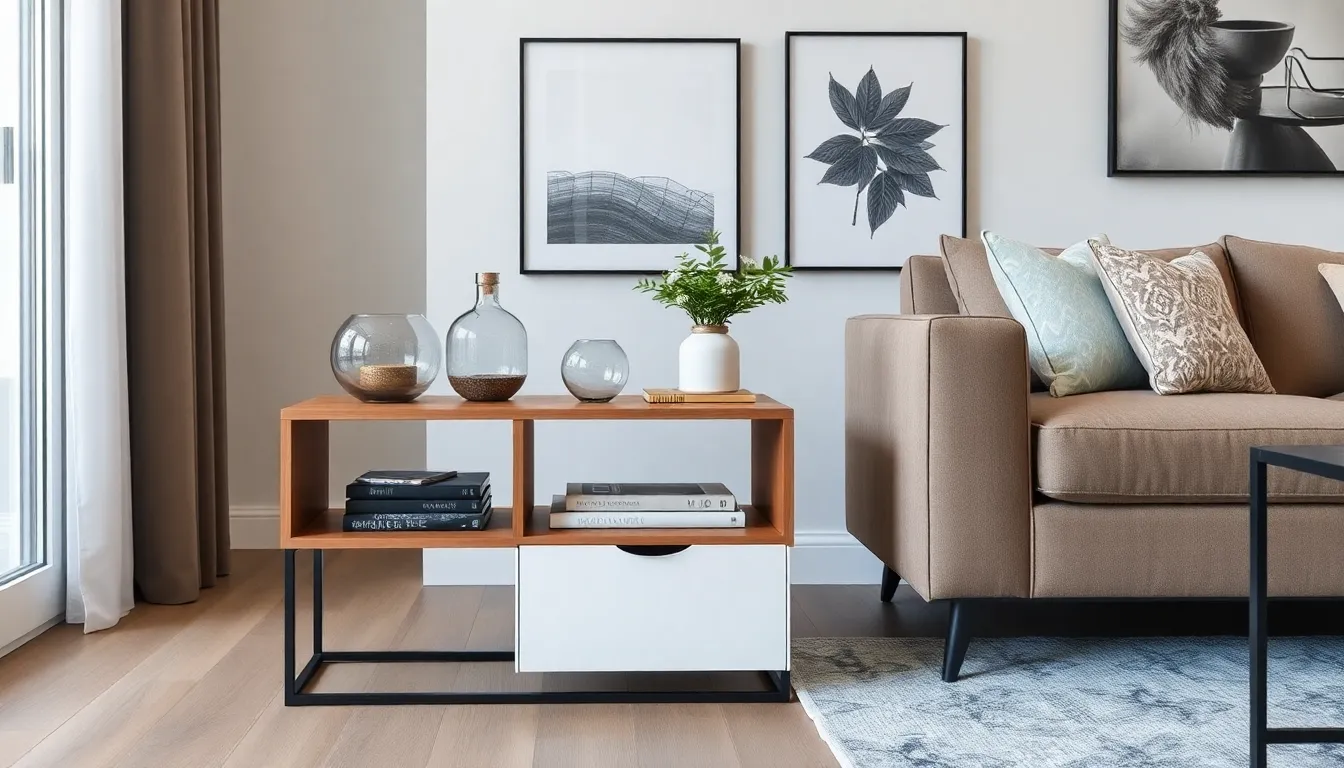
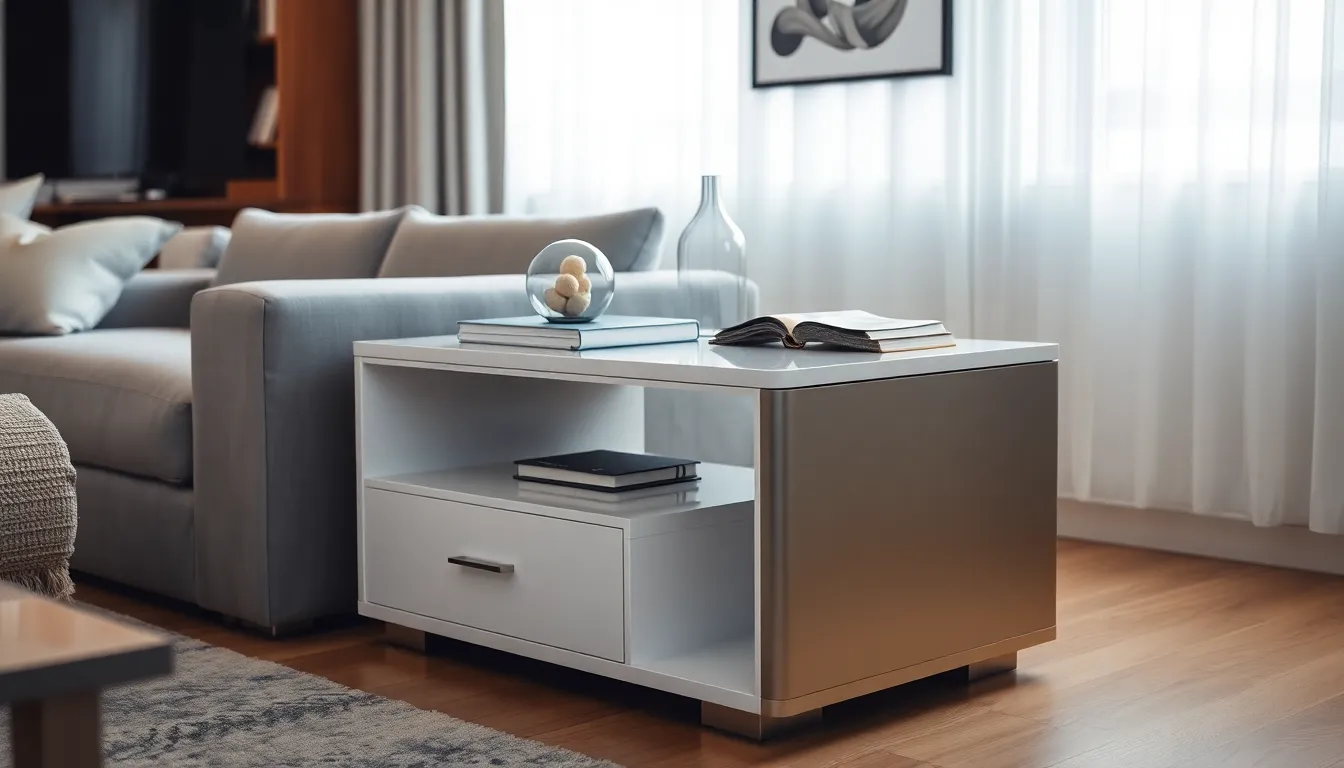
End tables serve multiple purposes in a living room, enhancing both functionality and style. These versatile pieces provide essential surfaces for everyday items while contributing to the overall decor.
Storage Options
Storage options for end tables vary widely. Many models include drawers or shelves, allowing for convenient storage of remote controls, books, or decorative items. These compartments help keep the living room organized and clutter-free. Some end tables feature hidden storage designs, which maximize function without sacrificing aesthetics. Choosing end tables with integrated storage provides practical solutions for maintaining an orderly space.
Space-Saving Designs
Space-saving designs thrive in smaller living rooms. Nesting tables, for instance, can be neatly stored together or separated as needed, offering flexibility without consuming excess space. Folding end tables provide an additional surface when hosting gatherings, easily stowing away when not in use. Multi-functional end tables, such as those with built-in stools, optimize limited areas while serving various purposes. Selecting these compact designs improves both utility and flow within the living room.
Popular End Table Designs
End tables come in various designs that enhance style and functionality in living rooms. Below are some popular options to consider.
Contemporary End Tables
Contemporary end tables feature clean lines and sleek silhouettes, often incorporating minimalist designs that blend seamlessly with modern decor. Materials like metal and glass are commonly used, contributing to a light and airy feel. Common characteristics include geometric shapes and bold colors, which add a striking visual element to any space. Featured styles include nesting tables for versatility and multifunctional options that combine storage with aesthetic appeal, making them suitable for both larger and smaller living rooms.
Rustic End Tables
Rustic end tables showcase natural wood finishes and distressed surfaces that evoke a warm, inviting atmosphere. These tables often emphasize organic shapes and rugged textures, reflecting the beauty of nature. Popular materials include reclaimed wood and wrought iron, which enhance durability while creating a vintage look. Key features often include exposed joints and artisanal craftsmanship, appealing to those seeking a charming, cozy design that complements traditional and farmhouse decor. Accessories like storage baskets can pair well with rustic end tables for added functionality.
End Table Placement Tips
Strategic placement of end tables enhances not just functionality but also overall aesthetic harmony in a living room. The following tips offer guidance on effective arrangements.
Considerations for Arrangement
Consider the room’s layout and flow when arranging end tables. Prioritize proximity to seating for easy access to items like drinks and books. Maintain a consistent height with adjacent furniture, aiming for end tables to be even with or slightly lower than armrests. Ensure there’s ample space for movement; allow at least 12 to 18 inches between seating and the table for comfort. Assess the table’s size relative to the space, opting for smaller pieces in tight areas to avoid overcrowding.
Pairing with Sofa and Chairs
Pair end tables thoughtfully with sofas and chairs to create visual cohesion. Select tables that complement the style of the primary seating. For modern sofas, choose sleek metal or glass tables; for traditional sofas, wooden tables in classic finishes work well. Position end tables on both sides of a sofa for a balanced appearance, or opt for a single table between chairs for a cozy conversation nook. Incorporate accent colors or materials found in the seating to unify the look, enhancing the overall design of the living room.
End tables are essential elements that blend style and functionality in any living room. They not only provide practical surfaces for everyday items but also enhance the overall aesthetic of the space. With a variety of designs and materials available, there’s an end table to suit every taste and decor style.
Choosing the right end table involves considering both its utility and how it complements existing furniture. Thoughtful placement can further enhance the room’s flow and visual appeal. By incorporating these versatile pieces, homeowners can create a welcoming atmosphere that invites relaxation and social interaction. Ultimately, end tables are more than just furniture; they’re integral components that elevate the living experience.

